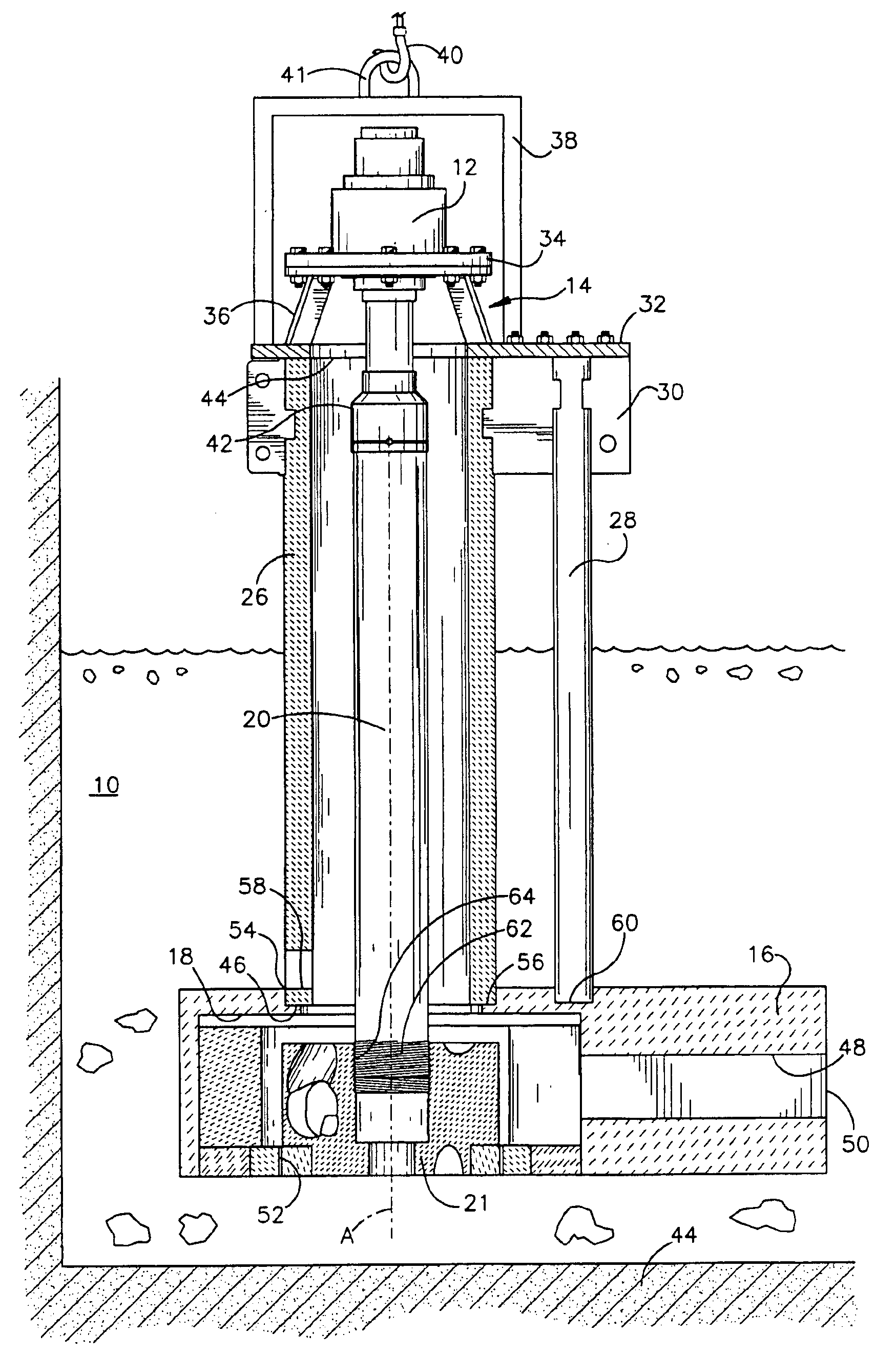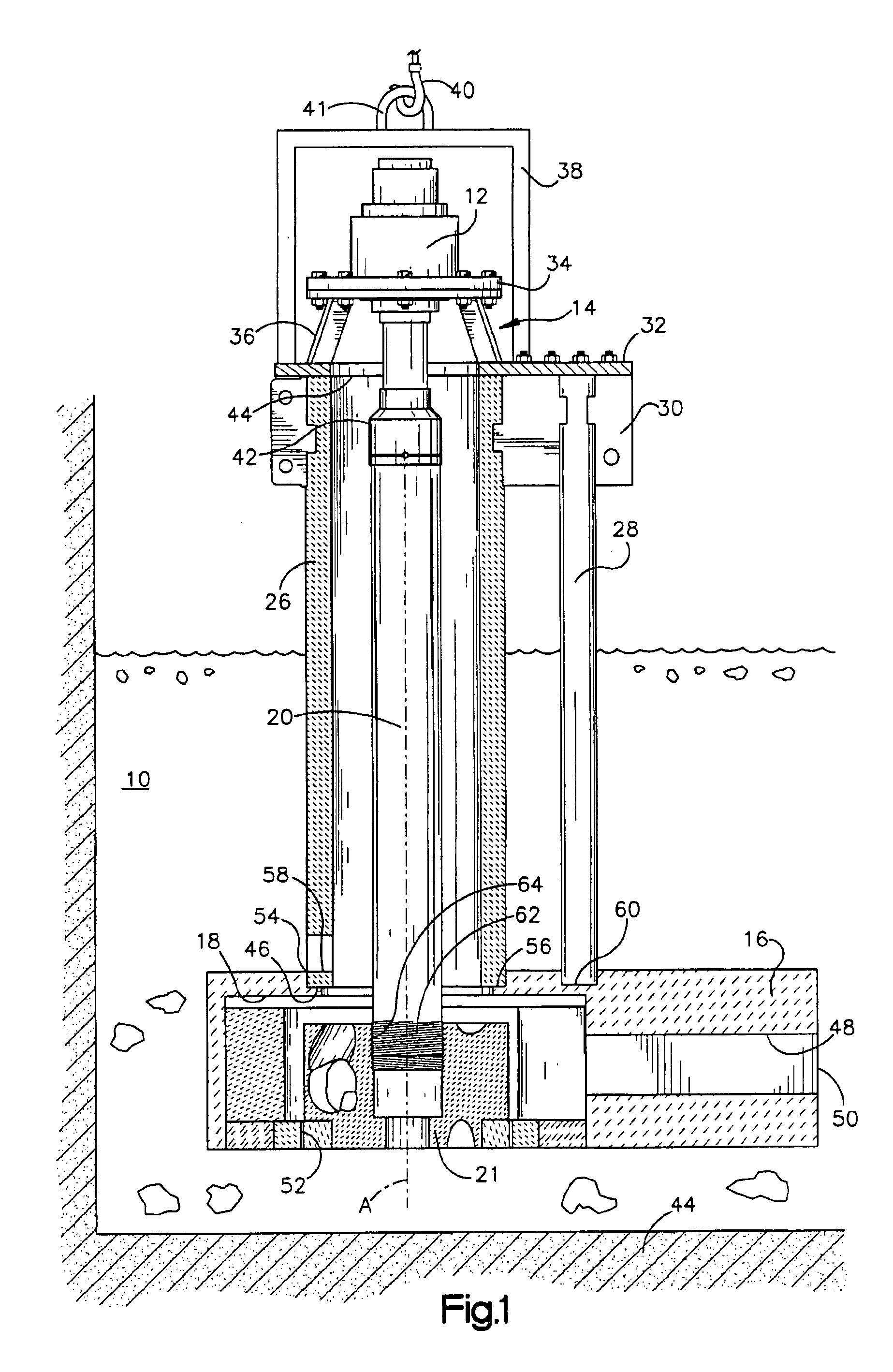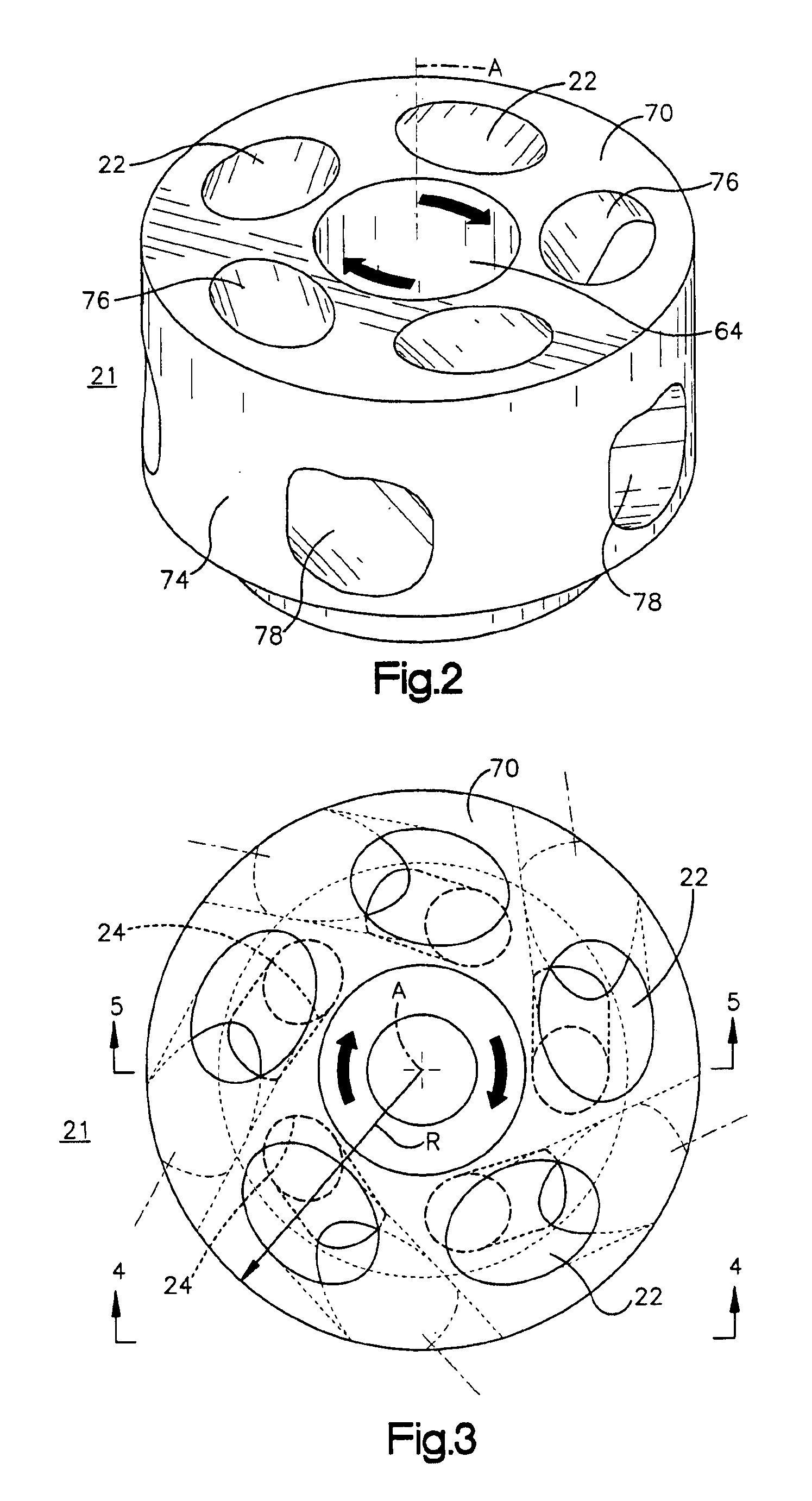Impeller for molten metal pump with reduced clogging
a technology of impeller and molten metal, which is applied in the direction of liquid fuel engines, marine propulsion, and vessel construction, etc., can solve the problems of clogging of impeller, poor casting of metal, and damage to solid impurities, so as to increase the efficiency of the impeller and prevent clogging
- Summary
- Abstract
- Description
- Claims
- Application Information
AI Technical Summary
Benefits of technology
Problems solved by technology
Method used
Image
Examples
fourth embodiment
[0097]FIGS. 23-25 show the vaned impeller according to a The vaned impeller includes upper entrance ports or inlets 126 disposed in the first end face 102 in alignment with molten metal entrance ports or inlets 127 of the second end face 104. Upper passages 124a extending from the upper inlets 126 in the upper end face 102 and lower passages 124b extending from the lower inlets 127 in the lower end face 104 lead to the cavities 120 and are also in alignment such that an axis (represented by rod 300 in FIG. 23) can extend into an inlet 126 and passage 124a of upper base 106 through impeller to inlets 127 and passages 124b of lower base 108. The alignment produces generally round openings 320 (best shown in FIG. 24) extending through impeller 100.
fifth embodiment
[0098]FIGS. 26-36 show further embodiments of the present invention in which the impellers are made of a non-metallic, heat resistant material, such as graphite and / or ceramic, suitable for operating in molten metal. In the fifth embodiment, FIGS. 26-28 show an impeller 400 which includes a rotational axis A and first and second end faces 402, 404 extending perpendicular to the central axis A. The first end face 402 is formed by the top surfaces of an upper base 406 of the impeller and the second end face 404 is formed by the bottom surface of a lower base 408 of the impeller (FIG. 28). Both the upper base 406 and the lower base 408 include an opening (409a, 409b respectively), centered about the central axis A. The impeller bases 406, 408 are defined by the volume of material in a radial direction from peripheral edge 425 of each of the openings 409a, 409b to the outer peripheral surface 418 of the impeller 400 and, in a direction along axis A shown in FIG. 28, providing the impell...
sixth embodiment
[0101]Referring to FIGS. 29-31, a sixth embodiment is shown. Impeller 500 includes a rotational axis A and first and second end faces 502, 504 extending perpendicular to the central axis A. The first end face 502 is formed by the top surfaces of an upper base 506 of the impeller and the second end face 504 is formed by the bottom surface of a lower base 508 of the impeller (FIG. 31). Both the upper base 506 and the lower base 508 include an opening (509a, 509b respectively), centered about the central axis A. The impeller bases 506, 508 are defined by the volume of material in a radial direction from peripheral edge 525 of each of the openings 509a, 509b to the outer peripheral surface of the impeller 518 and, in a direction along axis A shown in FIG. 31, providing the impeller bases 506, 508 with a substantially ring-shaped geometry. The impeller bases 506 and 508 include an annular recess 519a, 519b, respectively, in which an annular bearing member 512 resides. The annular bearing...
PUM
 Login to View More
Login to View More Abstract
Description
Claims
Application Information
 Login to View More
Login to View More - R&D
- Intellectual Property
- Life Sciences
- Materials
- Tech Scout
- Unparalleled Data Quality
- Higher Quality Content
- 60% Fewer Hallucinations
Browse by: Latest US Patents, China's latest patents, Technical Efficacy Thesaurus, Application Domain, Technology Topic, Popular Technical Reports.
© 2025 PatSnap. All rights reserved.Legal|Privacy policy|Modern Slavery Act Transparency Statement|Sitemap|About US| Contact US: help@patsnap.com



